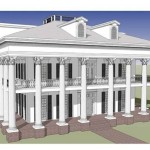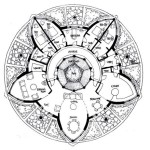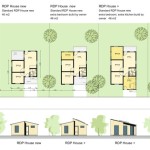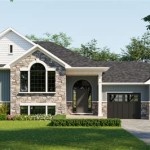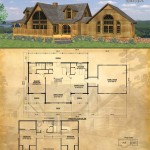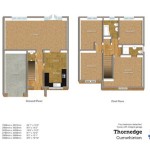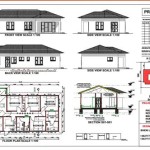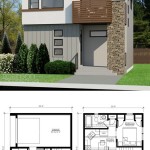Exploring the Elegance of English Style Home Floor Plans
English style home floor plans embody a timeless elegance, characterized by a blend of comfort, functionality, and a touch of historical charm. These plans often prioritize a sense of warmth and invitation, creating spaces that feel both lived-in and sophisticated. The architectural traditions of England, spanning various periods, heavily influence the design elements, leading to a diverse range of floor plan options that cater to individual preferences and lifestyle requirements. This article will explore key characteristics and considerations when selecting or designing an English-style floor plan, highlighting the nuances of various features and design principles.
Key Characteristics of English Style Home Floor Plans
Several defining characteristics distinguish English-style home floor plans from other architectural styles. These traits, often rooted in the historical context of English architecture, contribute to the overall aesthetic and functionality of the home.
Emphasis on Formal Living Spaces: English homes traditionally feature distinct and well-defined living areas. A formal living room, often adorned with a fireplace, serves as a central gathering space for entertaining guests and enjoying quiet moments. A separate dining room, typically adjacent to the living room or kitchen, is designed for formal meals and celebratory gatherings. These spaces are meticulously planned to create an atmosphere of refinement and gracious living.
Integration of Natural Light: While maintaining a sense of privacy, English homes often incorporate large windows to maximize natural light. Bay windows, a common feature in many English architectural styles, provide ample illumination and create cozy window seats. Strategically placed windows throughout the home ensure that each room receives sufficient natural light, enhancing the overall ambiance and creating a bright and airy atmosphere. Skylights and strategically positioned mirrors can further amplify the effect of natural light, especially in areas that may not receive direct sunlight.
Practical and Functional Kitchen Designs: The kitchen in an English-style home is not merely a utilitarian space; it is the heart of the home. Floor plans often incorporate a large, central island providing ample workspace and a gathering point for family members. The kitchen design prioritizes functionality, with carefully planned layouts that optimize workflow and storage. Features like a butler's pantry, a separate pantry, or ample cabinetry are common, ensuring that the kitchen remains organized and efficient. The use of natural materials, such as wood and stone, contributes to the warm and inviting atmosphere of the English-style kitchen.
Incorporation of Outdoor Living Spaces: English-style homes often feature well-designed outdoor living spaces that seamlessly blend with the interior. Patios, decks, and gardens extend the living area, providing opportunities for relaxation and entertainment. Carefully landscaped gardens, often featuring climbing roses, herbaceous borders, and manicured lawns, enhance the overall aesthetic of the property. The integration of outdoor lighting and comfortable seating creates an inviting atmosphere for enjoying the outdoors throughout the year. These outdoor spaces are designed to be extensions of the home, offering a tranquil retreat and opportunities for social gatherings.
Use of Traditional Materials: English-style homes typically incorporate natural materials, such as brick, stone, and wood, which contribute to the overall character and charm of the design. Brick or stone facades create a sense of solidity and permanence, while wood trim, exposed beams, and hardwood floors add warmth and texture to the interior. The use of these materials not only enhances the aesthetic appeal of the home but also ensures its durability and longevity. Traditional building techniques and craftsmanship are often employed to create a sense of authenticity and historical accuracy.
Considerations When Choosing an English Style Floor Plan
Selecting an English-style floor plan requires careful consideration of various factors, including lifestyle, family size, and personal preferences. A well-chosen floor plan will not only enhance the aesthetic appeal of the home but also improve the overall quality of life for its occupants.
Family Size and Lifestyle: The size and layout of the floor plan should be tailored to the needs of the family. Larger families may require multiple bedrooms and bathrooms, as well as ample living and dining space. Those who enjoy entertaining may want to consider a floor plan with a large, open-concept kitchen and dining area. Families with young children may benefit from a floor plan that places the bedrooms close to each other, while older families may prefer a more spread-out layout that provides greater privacy. The floor plan should accommodate the daily routines and activities of the family, ensuring that the home is both functional and comfortable.
Location and Orientation: The orientation of the home on the property should be carefully considered to take advantage of natural light and views. South-facing windows will maximize sunlight exposure during the winter months, while east-facing windows will capture the morning sun. The floor plan should be designed to take advantage of these natural elements, creating a bright and cheerful living environment. The location of the home should also be considered, with factors such as proximity to schools, shopping centers, and transportation routes taken into account.
Budget and Construction Requirements: The budget for the project will influence the size and complexity of the floor plan. More elaborate floor plans with intricate architectural details and high-end finishes will typically cost more to construct. It is important to work with a qualified architect or builder to develop a realistic budget and timeline for the project. The construction requirements of the floor plan should also be considered, with factors such as soil conditions, building codes, and zoning regulations taken into account. A thorough understanding of these factors will help to ensure that the project is completed on time and within budget.
Adaptability and Flexibility: The floor plan should be designed to be adaptable and flexible, allowing for future changes in lifestyle and needs. Consider spaces that can be easily converted to different uses, such as a home office that can be transformed into a guest room. The layout should be designed to accommodate changing family dynamics, such as the addition of children or the care of aging parents. A flexible floor plan will ensure that the home remains functional and comfortable for many years to come. Incorporating unfinished spaces, such as a basement or attic, can provide additional living area that can be developed as needed.
Specific Design Elements in English Style Homes
Beyond the overall floor plan, specific design elements play a crucial role in creating the authentic English style. These details, ranging from architectural features to interior finishes, contribute to the overall charm and character of the home.
Fireplaces: Fireplaces are a quintessential feature of English-style homes, serving as both a source of warmth and a focal point in the living room. They are often adorned with ornate mantels, decorative tiles, and intricate detailing, reflecting the architectural style of the home. Fireplaces can be either wood-burning or gas-burning, depending on personal preference and local regulations. The fireplace serves as a gathering place for family and friends, creating a cozy and inviting atmosphere.
Crown Molding and Wainscoting: Crown molding and wainscoting are common architectural details in English-style homes, adding elegance and sophistication to the interior. Crown molding, installed along the top of the walls, creates a visual transition between the walls and the ceiling. Wainscoting, installed along the lower portion of the walls, adds texture and depth to the space. These details can be customized to match the architectural style of the home, with various designs and materials available. The use of crown molding and wainscoting enhances the overall aesthetic appeal of the home, creating a sense of refinement and historical accuracy.
Hardwood Floors: Hardwood floors are a classic choice for English-style homes, adding warmth and character to the interior. They are durable, easy to maintain, and complement a wide range of decorating styles. Various types of hardwood are available, including oak, maple, and cherry, each with its own unique grain pattern and color. Hardwood floors can be stained or finished to match the overall aesthetic of the home, creating a cohesive and harmonious look. The use of area rugs can add warmth and texture to the space, while also protecting the hardwood floors from wear and tear.
Traditional Windows and Doors: Windows and doors play a significant role in the overall aesthetic of English-style homes. Traditional windows, such as casement windows and double-hung windows, are often used to maximize natural light and ventilation. Doors are typically made of wood, with paneled designs and decorative hardware. The style of the windows and doors should be consistent with the architectural style of the home, creating a cohesive and harmonious look. The use of leaded glass or stained glass windows can add a touch of elegance and historical accuracy to the design.
By carefully considering these design elements and incorporating them into the floor plan, it is possible to create an English-style home that is both beautiful and functional. The result will be a timeless and elegant living space that reflects the charm and character of English architecture.

English Cottage Style Home Plan 6970am Architectural Designs House Plans

This Is So Perfect Super Attractive Has A Library Though I Probably Won T Be Needing The Servant Tudor House Plans Vintage Cottage

1928 Modern English Revival House Plan Cottage Plans

The Telegram Plan Book Portland Or English Cottage No 675 O M Akers Craftsman Style House Plans

1935 English Cottage Style Ladies Home Journal Small 20th Century House Plans

English Country Cottage House Plans And Classical Home Designs

Modern English Style No 3031 1920s House Plans By The Southern Pine Association

House Plans 2 Story Prairie Style Home Old English Details Printed

1927 Hepburn By William A Radford Cottage Floor Plans Style House Vintage
Craftsman Home Plan 5 Bedrms 4 Baths 5613 Sq Ft 161 1047

